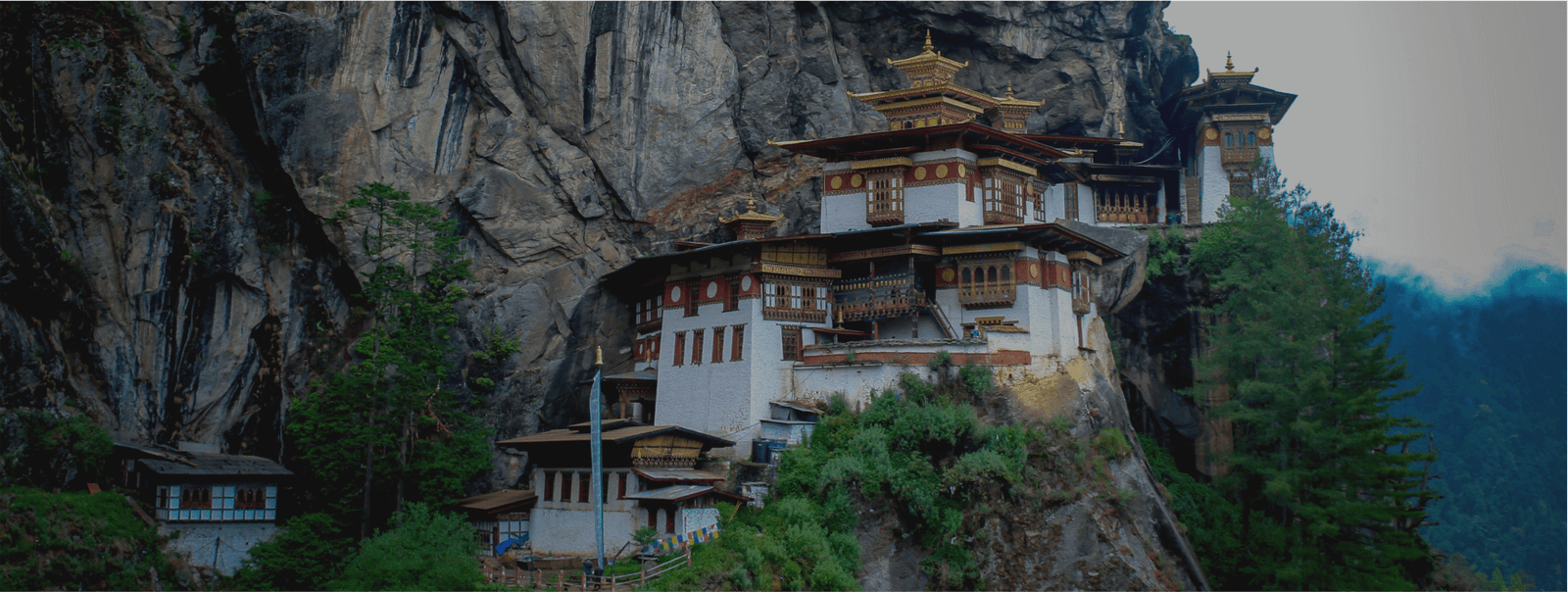Fill Up
Get a customized quote. Share your travel dreams, and we'll craft a personalized itinerary for you!
Get a customized quote. Share your travel dreams, and we'll craft a personalized itinerary for you!
A attraction for individuals and groups alike, is the rich and diverse wildlife that exists in the innumerable forests and reserves. We curate exclusive adventures that allows you to immerse into the arms of mother nature and explore the wilderness of the destinations you visit.


Opened to tourism in 1974 after the coronation of the Fourth King, His Majesty Jigme Singye Wangchuk, Bhutan remains one of the world’s most exclusive tourist destinations. Luxury Bhutan Tours offer travelers a rare opportunity to explore a kingdom where traditions are not merely preserved but are deeply ingrained in daily life.
Many countries claim to showcase their unique traditions, but often these experiences are artificially preserved for tourists. In contrast, Bhutan’s traditions are authentic and alive. Visitors can see, feel, and experience the rich cultural heritage firsthand. Luxury Bhutan Tours provide an immersive journey where travelers witness traditional arts, ceremonies, and festivals that hold deep religious and spiritual significance.
In a world where globalization has diminished many cultural identities, Bhutan stands proudly apart. The kingdom’s commitment to preserving its heritage ensures that festivals, rituals, and traditions remain vibrant and meaningful. Travelers on Luxury Bhutan Tours can witness these authentic practices, which continue to shape the lives of the Bhutanese people.
According to the Royal Government of Bhutan’s Tourism Policy, all tours must be pre-planned and pre-paid as guided package tours. The tariff is set by the Tourism Council of Bhutan and includes accommodation, local transport, guides, meals, entry to sites, government royalties, and taxes. Supplementary charges apply for deluxe and luxury hotels. All tours must be booked in advance through local Bhutanese tour operators, who handle all ground arrangements, including visas. There are no restrictions on the number of travelers, and even solo travelers are warmly welcomed.
To learn more about Bhutan and its tourism policies, visit the Tourism Council of Bhutan. For those seeking authentic experiences with a touch of elegance, Luxury Bhutan Tours promise an unforgettable journey into this mystical kingdom.
GMT + 6
Thimpu
38,394 km2 with 70% green cover
7.54 lakhs (2018)
75% of population practise Buddhism (Vajrayana Buddhism)
Ferroalloy, cement, mining, processed fruite
Bhutanese ngultrum (BTN)
30V/50 Hz (type C and D sockets)
The weather in Bhutan varies significantly with altitude. In the northern parts of the country, where mountains rise up to 7,000 meters, the climate is similar to the Arctic. Snow falls two to three times every winter. Moving southward, closer to India, the weather becomes hot and humid during summer and cooler in winter. Monsoon rains in this region are often heavy. Additionally, the eastern part of the country tends to be warmer than the west. Meanwhile, the central region enjoys a sub-tropical climate with cool winters.
The best times to visit Bhutan are in spring (March–May) and autumn (late September–November) when the weather is warm, dry, and sunny. Although January and February can be colder, the climate remains dry and pleasant from March to April. Late spring brings increased heat and humidity, but this is also when the famous rhododendrons bloom, painting the valleys with vibrant colors.
From June to September, monsoon rains cover the mountains, making it difficult to explore certain areas. However, if you are interested in witnessing the rare black-necked cranes, plan a visit to the Phobjikha Valley between late October and mid-February.
Bhutan experiences cold weather between December and February, although most days are clear and sunny with minimal rainfall. During this period, warm jackets, waterproof clothing, thermals, gloves, sun hats, sunscreen, and sunglasses are highly recommended.
A typical day may require wearing a shell jacket over a fleece or wool sweater, paired with a shirt, T-shirt, or jumper and long pants. Since most areas feature hilly terrain, good quality leather or waterproof boots with sturdy soles are essential. Additionally, carry a pair of waterproof walking shoes for regular use.
When visiting monasteries and temples, avoid wearing fancy hats, shorts, or sleeveless tops. You must always remove your shoes before entering a shrine or temple, but socks are permitted. Furthermore, smoking, consuming alcohol, or using narcotics near religious monuments is strictly prohibited. Loud behavior, including shouting, yelling, or laughing, is also considered disrespectful in these areas.
Women in Bhutan prefer to dress modestly, and revealing clothing such as low-cut tops and short skirts is generally inappropriate in public spaces. To respect local customs, it’s best to wear lightweight, loose-fitting trousers or skirts. Even at dinner, dressing up is uncommon.
While the consumption of tobacco is not entirely prohibited in Bhutan, it is banned in most public accommodations. However, liquor consumption is allowed in private settings.
All tourists, except residents of SAARC countries, must obtain visa clearance before traveling to Bhutan. You need to send a copy of your passport’s photo page to a licensed Bhutanese tour operator or a travel agent. Once the full payment for the holiday, including a USD $40 visa fee, is received by the Tourism Council of Bhutan (TCB), the visa is processed within 72 working hours.
Upon arrival, you must present the visa clearance letter, after which the visa is stamped on your passport. Foreigners are usually issued an Entry Permit valid for 7 or 14 days, allowing travel only within Thimphu and Paro. To visit other regions, you will need a Restricted-Area Permit.
Visa and entry regulations may change depending on government policies. For the latest updates on this crucial aspect of your travel, feel free to contact our team for detailed information.